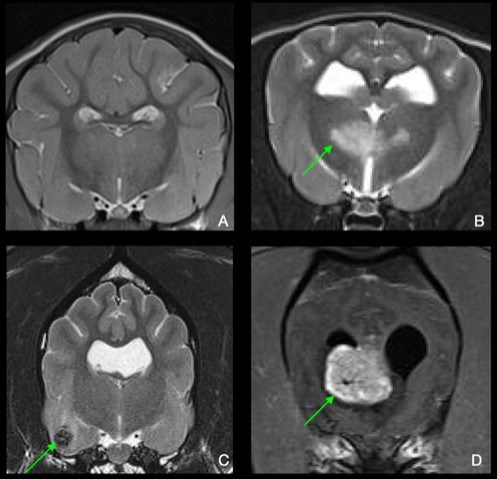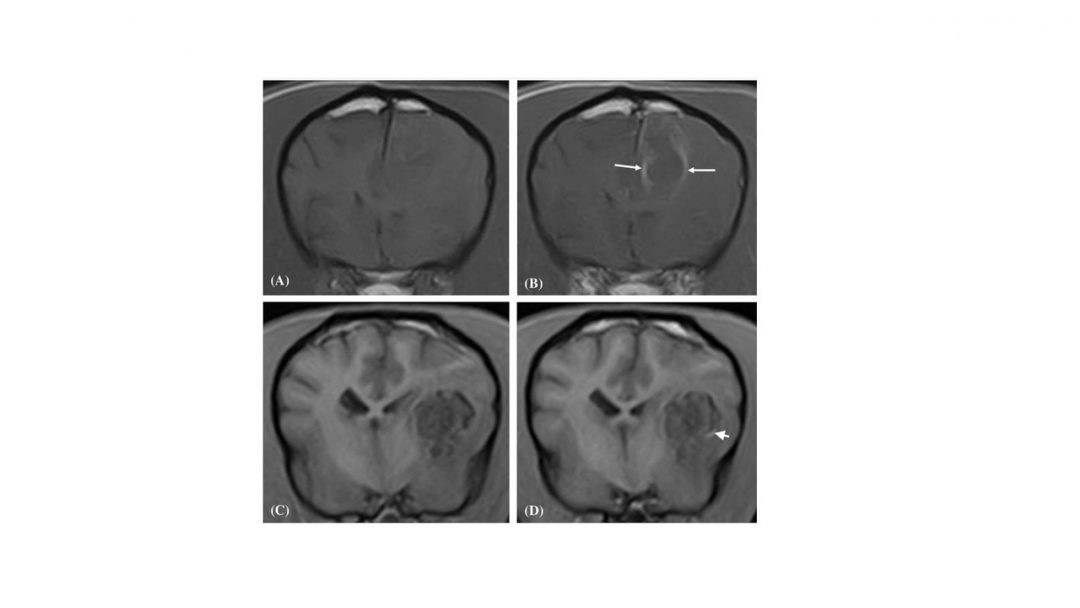Dr Amanda Taylor takes a look at epilepsy in dogs and cats, its possible causes, and how veterinary MRI for dogs and cats with seizures can help in diagnosis.
What is Epilepsy?
Epilepsy is defined most simply as a brain disease that results in recurrent seizures. The term epilepsy does not indicate the cause of the seizures.
What are the Causes of Epilepsy in Dogs and Cats?
There are numerous causes of seizures in both species. One of the most straightforward ways to break this down is to divide causes of seizures into 2 categories. Disease outside the brain affects the way the brain is functioning. Disease inside the brain directly disrupts normal brain function.
Diseases Outside the Brain
Diseases outside the brain include toxins, such as Bufo toad (cane toad) toxicity, systemic illness such as kidney or liver disease, and nutritional deficiencies such as thiamine deficiency. While it is important to rule these diseases out, one must remember they are relatively uncommon causes of seizures. Some of these diseases can be distinguished based on patient history: toxicities are sudden in onset and do not repeat over time (months). Others can be ruled out with baseline blood work evaluating the body’s overall health picture (kidney or liver disease). If a disease outside the brain is strongly suspected or confirmed, MRI is not pursued. If these diseases can be ruled out, MRI is often recommended to determine the underlying cause of the seizures within the brain.
Diseases Within the Brain
Diseases within the brain include epilepsy which is a symptom of structural brain disease such as cancer, auto-immune disease of the brain (meningoencephalitis), or vascular events (similar to strokes in humans), and epilepsy in patients with structurally normal brains (idiopathic or cryptogenic). Idiopathic epilepsy is recurrent seizures without an identifiable structural cause in the brain. This occurs in dogs between the age of 6 months and 6 years. These patients are normal on their neurological examination and in between seizures. Cryptogenic epileptics have no identifiable cause of seizures but are older than the typical age range for idiopathic epilepsy.
Why Should I Have an MRI Performed on my Epileptic Pet?
My clients seek MRI for a variety of reasons when their pet has epilepsy. I would narrow these reasons down to the two most common:
- To rule out progressive causes of seizures such as an auto-immune brain disease or brain cancer and confidently move forward with the treatment of epilepsy.
- To determine if there are changes within the brain secondary to seizures that could indicate long-term changes such as atrophy or loss of tissue.
Are There Cases Where you Encourage Clients More Strongly to Seek MRI to Learn the Cause of Seizures?
If my patient has an abnormal neurological examination or other signs of neurological disease such as behavior changes, loss of vision, walking in circles, or changes in level of alertness, I have greater concern for a progressive neurological disease, such as cancer, than for idiopathic epilepsy. As my patient’s age, the likelihood that we will encounter a progressive brain disease becomes higher. A senior or geriatric dog that begins having seizures most commonly has a progressive brain disease. Some breeds of dogs are more likely to suffer from auto-immune disease of the brain. Typically, these include Chihuahuas, Maltese, French Bulldogs, and Toy Poodles. Should one of these breeds present with a sudden onset of seizures and other subtle neurological signs, an MRI would be strongly recommended.
What Can you Find with MRI?
MRI is incredibly accurate in picking up small abnormalities in the brain. With this modality, there is a significant chance that an abnormal finding will be detected. An MRI can be normal, detect a brain tumor, detect a vascular event or autoimmune disease of the brain (Figure 1).
Figure 1
A: Normal Brain MRI
B: Brain with Meningoencephalitis (arrow points to abnormality)
C: Brain with Glioma (arrow points to abnormality)
D: Brain with Choroid Plexus Tumor (arrow points to abnormality)

Does Anesthesia Make Seizures More Likely to Occur?
Typical anesthetic protocols for patients undergoing brain MRI include drugs that are protective against seizures (midazolam, isoflurane) and make seizures less likely to occur. I recommend that patients with recurrent seizures be on anticonvulsant maintenance therapy prior to MRI if possible. Occasionally, after the MRI and recovery from anesthesia, seizures can occur.
Are There any Other Reasons Neurologists Consider MRI for Their Patients?
As a neurologist, I am also interested in the long-term data that can be gathered from more patient scans. We may learn in the future that findings on MRI correlate with a better or poorer prognosis or response to treatment.
What if my Pet’s MRI is normal?
Overall this is good news! A normal MRI indicates your pet does not have a progressive brain disease such as cancer. However, every epileptic is different. Whilst some are relatively easy to manage with anticonvulsant therapy, others can be refractory or non-responsive to treatment. Patients with epilepsy can have shorter lifespans than those without this disease. Sadly, for some, the burden of seizure management can affect quality of life, resulting in clients electing euthanasia for their pet.
INTERESTED IN VISIONARY VETERINARY IMAGING?





